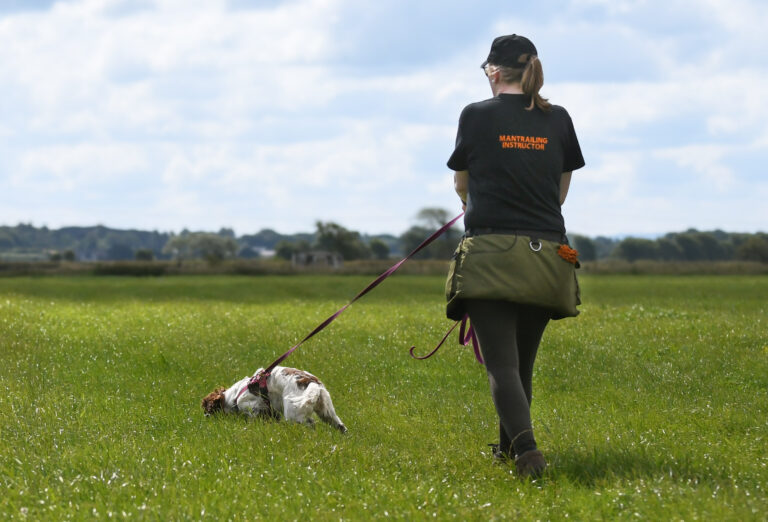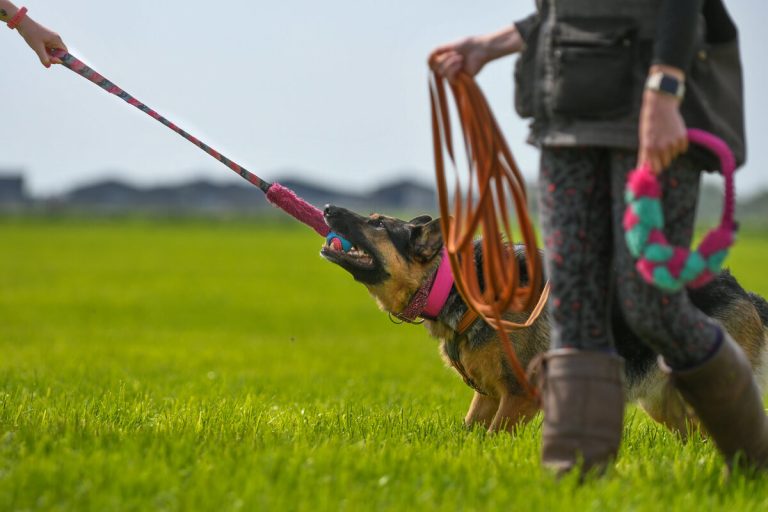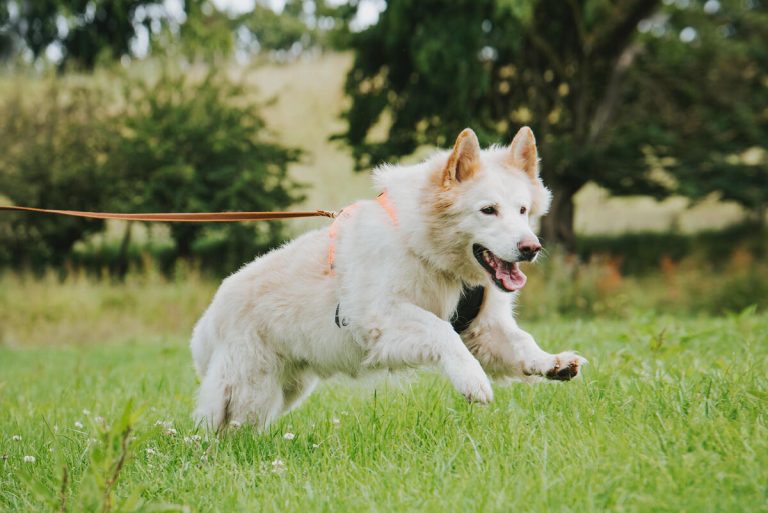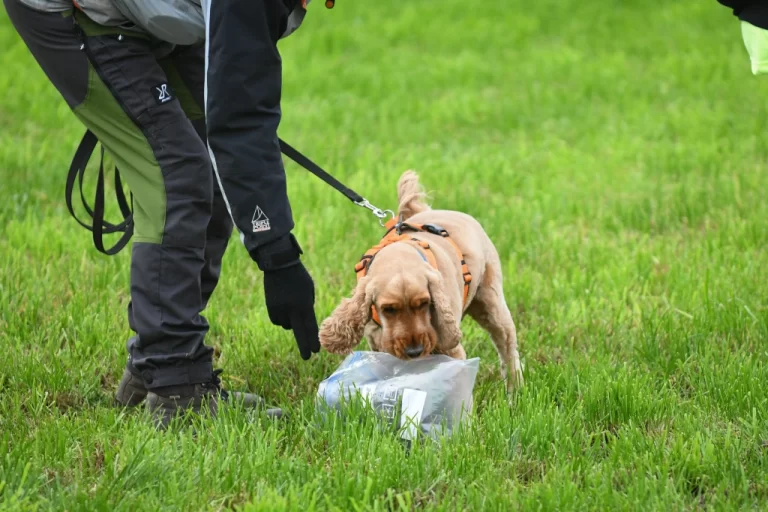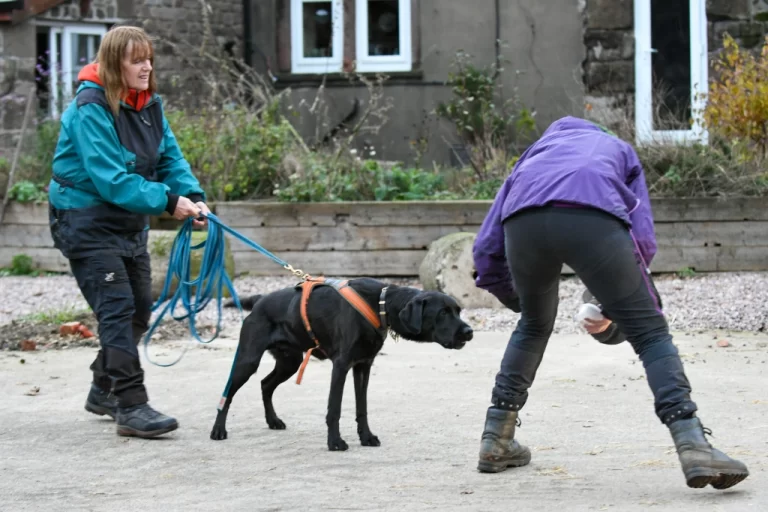Reading Proximity Behaviour in the Mantrailing Dog
If you’re passionate about mantrailing, whether in real-life searches or mantrailing workshops, one of the most valuable skills you can develop is learning how to read your dog.
Proximity behaviour is a perfect example: it can be exciting to watch, but also confusing, chaotic, and even unsafe if misunderstood.
Letting dogs drag you into bushes, or even across roads isn’t a safe way to handle as the dogs pursue their reward.
At Trailing K9s, we specialise in helping handlers learn these skills through our mantrailing workshops and online learning resources. In this article, we’ll take a deep dive into proximity behaviour: what it is, why it happens, and how you can manage it more effectively when training your mantrailing dog.
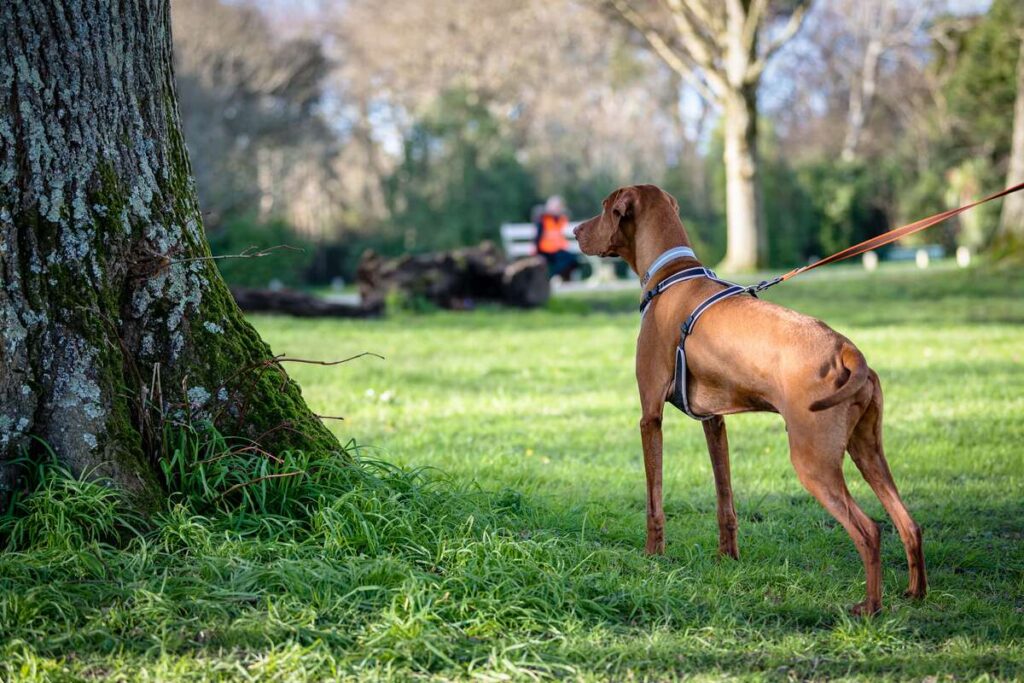
What Is Proximity Behaviour in Mantrailing?
Proximity behaviour occurs when your dog picks up a high concentration of human scent in the environment and concludes that the trail layer (the person being trailed) is nearby.
The crucial point: proximity doesn’t always mean the person is right there. It means the scent is strong enough for the dog to believe it is and rush to get to what they perceive is the reward aka the trail layer at the end of the trail.
Common signs of proximity behaviour include:
- Tightening of the line with increased tension
- The head lifting up into the air
- Erratic searching or scanning
- Frantic sniffing, with intensity increasing
- General “chaos mode”—everything speeds up and becomes more powerful
Rather than calming down, dogs usually get wilder when proximity kicks in. In enthuasitc or large dogs this can become dangerous flailing at the end of the lead.
Why Proximity Behaviour Can Be Problematic
While it’s positive that your dog is in scent, proximity behaviour can lead to difficulties:
- Guessing instead of trailing: Dogs may abandon the actual trail to rush towards where they think the person is.
- Safety risks: Powerful dogs in a heightened state can drag handlers or even cause injury.
- Loss of focus: Dogs can become reward-obsessed, especially if trained in poorly sports where the trail layer is very visible.
- Wasted time: Chaotic behaviour can add minutes to a trail when a calmer, nose-driven approach would find the person more quickly.
- It looks like success: People think the dog finding the person is the only measure of success in mantrailing, but in reality the journey and dogs understanding of the game are the biggest successes in mantrailing.
- It’s stressful; The dog is so hellbent on getting to the end of the trail they aren’t thinking, their arousal is high and they are no longer optimally learning but flying through the trail to find a single reward.
This is why reading proximity behaviour is one of the most important skills we teach in mantrailing workshops and in our online courses.
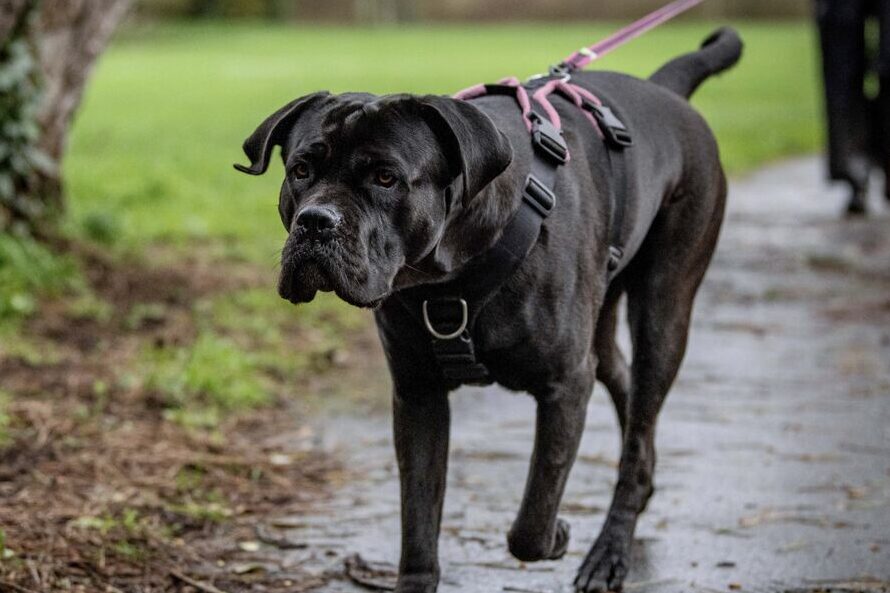
A Real-Life Example
While running a workshop recently, I worked with a German Shepherd who taught us an important lesson about scent movement.
The trail layer had been hidden in a bush. What I hadn’t realised was that a ditch nearby was funnelling odour down towards the path. The dog hit this plume, became convinced the person was “up there,” and tried to launch itself into the bush. It took me and the handler by surprise, and I had to launch on the end of the line to prevent injury.
This behaviour was:
- Accurate in one sense: the scent was there.
- Dangerous in another sense: the intensity could have dragged both dog and handler into unsafe ground.
The example highlights how human scent doesn’t stay still. It moves with wind, damp, thermal layers, and terrain features like ditches. Proximity isn’t wrong—it just doesn’t always mean what handlers think it does. We have to factor this in, and make sure trails are set up for success, not to rush to the end.
The A–Z vs. A–B–C Approach to Mantrailing
This is where training philosophy comes in.
- A–Z mindset: The dog races from the start to the finish for a quick reward. They don’t follow the trail, instead they guess where the scent might be working wildly and
- A–B–C–D mindset: The dog works methodically, problem-solving along the way, staying in scent until the conclusion, and they tend to focus on following the scent and finding reward in the following, as well as getting to the end of the trail.
Dogs conditioned for the A–Z mindset are more prone to chaotic proximity behaviour. Dogs trained with the A–B–C approach stay calmer, focused, and safer.
At Trailing K9s, our mantrailing workshops and online training are designed to build that A–B–C journey mindset—because that’s where the true magic of mantrailing lies. Building strong foundations and teaching dogs how to follow a trail rather than rush to the end.
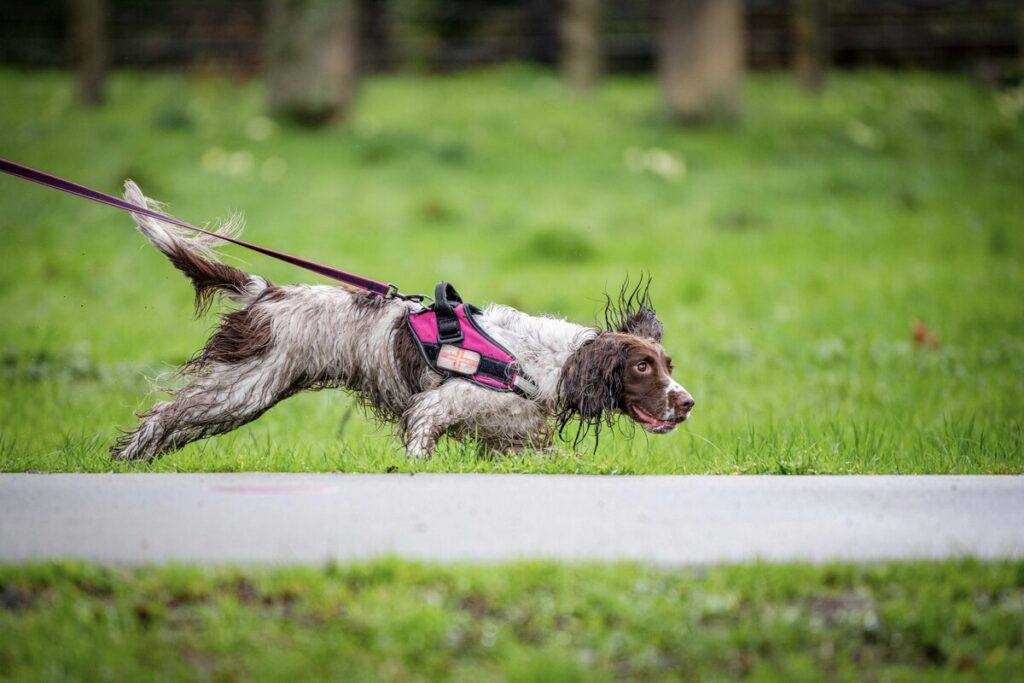
How to Manage Proximity Behaviour
You can’t prevent proximity behaviour, it is communication behaviour we want the dog to display, but you can teach your dog to work through it more effectively and safely. Here are some strategies:
- Careful trail layer placement: Use cover, wind direction, and visibility to your advantage. Think about where the person is being hidden, not picking the easiest option but the best option for the scent movement.
- Articles instead of people: A scent article can create a plume without the full excitement of a person, as it is smaller and the dog can be rewarded from the handler.
- Handler energy: Slow your dog down with line handling—weight in the line, steady control, and no rushing forward. Just because the dog picks up speed doesn’t mean you need too.
- Varied training setups: Use aged trails, hidden trail layers, or even remove the person at times to develop thoughtful trailing.
- Add tracking into the learning: Tracking teaches your dog to value the ground scent and rewards from the ground, instead of only being rewarded at the end.
- Awareness of memory: Dogs remember where they’ve found people before. Factor this into your trail set up.
Learning Online vs. In-Person Workshops
If you’re struggling to read your dog’s behaviour, you’re not alone. Proximity is one of the trickiest aspects of mantrailing to understand, because it can look like crittering and hunting for the trail.
That’s why we offer two ways to learn with Trailing K9s:
- In-person mantrailing workshops: Hands-on coaching, tailored setups, and real-time feedback.
- Learning online: The mantrailing membership offers webinars, video analysis, and written resources that let you study dog body language and scent theory at your own pace.
Both approaches complement each other, giving you the skills to build a confident, safe, and skilled mantrailing partnership. You can’t learn everything online, and in person can be so fast paced that you tend to not log half of what is happening.
Proximity Behaviour Progression
Proximity behaviour is exciting to see, but without careful handling it can quickly become chaotic. By understanding what proximity really means and learning to manage it, you can transform your dog’s mantrailing from a reward-driven race into a thoughtful journey.



